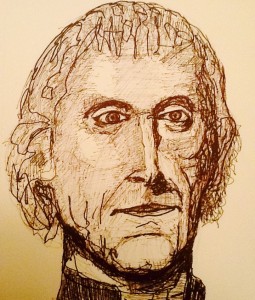“When in the course of human events, it becomes necessary for one people to dissolve the political bands which have connected them with another, and to assume among the powers of the earth, the separate and equal station to which the laws of Nature and of Nature’s God entitle them, a decent respect to the opinions of mankind requires that they should declare the causes which impel them to the separation.”
First paragraph of the Declaration of Independence
As we approach the Fourth of July, it is important to know that a divorce case had a place in the founding of our country. In his book, Thomas Jefferson — A Life (1993 Harper Perennial), William Sterne Randall tells the story of a divorce and how it formed the basis of the Declaration of Independence.
Dr. James Blair was a prominent physician in Williamsburg when he married a much younger Kitty Eaustace in 1772. The situation was fraught with drama. Kitty had learned that her husband was impotent. Dr. Blair believed Kitty was having an affair with the British Governor of Virginia.
In November 1772, Dr. Blair retained Thomas Jefferson as his attorney to represent him in obtaining a divorce from Kitty. This was not an easy task for Jefferson. No divorce had ever been granted in the colony of Virginia since its inception. Therefore, Jefferson had to find a way to make this divorce happen for his client.
According to Randall, Jefferson’s research “. . . went beyond divorce: it entailed the very relationship of an empire and its colonies and whose law would govern. The Blair case was a test of his emerging theory of self-rule for Virginia.”[1]
Jefferson turned to Enlightenment writers, to Locke and Montesquieu, to buttress his arguments. Unfortunately, Dr. Blair died prior to Jefferson presenting his case to the Virginia General Assembly. However, his arguments prepared for the Blair divorce would become the reasoning found in the Declaration of Independence. It is no surprise that the Declaration of Independence resembles a divorce petition.
[1] William Sterne Randall, Thomas Jefferson – A Life, at p 163 (1993, Harper Perennial).



